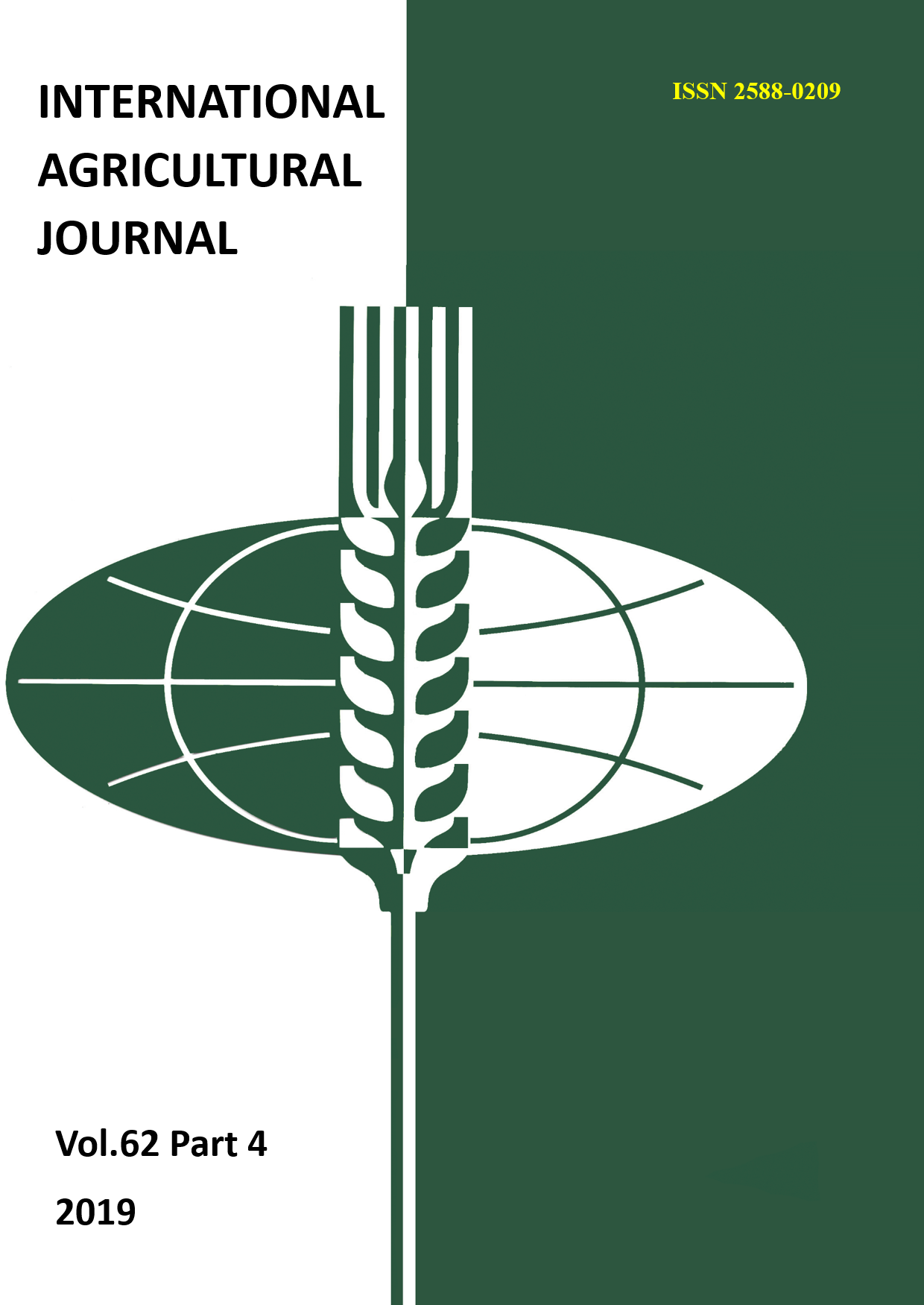INFLUENCE POTATO-FODDER CROP ROTATIONS ON YIELD AND QUALITY OF POTATOES AND ON THE FERTILITY OF PERMAFROST SOILS OF YAKUTIA
Main Article Content
Abstract
Presents the results of research on the influence of the plowing of forage crops (oats, peas-oat mixture, vetch-oat mixture) on yield, quality of tubers of released varieties Yakutyanka, and the agrochemical composition (humus, total nitrogen, phosphorus and potassium) and biological activity of permafrost soils in conditions of Central Yakutia. Field experiments were conducted in 2015 - 2017 on the irrigated area "Belentei" in Central Yakutia of the Republic of Sakha (Yakutia). The soil of the experimental site is permafrost black soil-meadow saline; humus content in the arable soil layer before laying the experiment (2015) was 3.2%, P2O5 – 125.0 mg/kg, K2O – 292.0 mg/kg, N – 0.31%. Forage crops were ploughed in 2015. It is revealed that on permafrost Chernozem-meadow saline soils the plowing of forage crops increased the content of the main nutrients of the soil in comparison with the cultivation of potatoes in the monoculture. It was established that the positive effect on the yield of potato tubers was noted by the link of the crop rotation of the pea-oat mixture, with an increase in yield of 2.3 t/ha (potatoes-monoculture – 11.0 t/ha). The increase in the content of starch in potato tubers has been observed when the smell of oats and vetch-oat mixture. The study of the dynamics of the number of soil microorganisms showed that in the soils of the experimental site the content of the total number of microorganisms change significantly. Their number reaches its maximum in July, averaging over the years of research from 209.96 to 777.3 million CFU/gr. soil, and decreases in September by 1.5 times.
Article Details
References
2. Ezhov G.I. Rukovodstvo k prakticheskim zanyatiyam po sel'skohozyajstvennoj mikrobiologii. Novosibirsk, 1974. S. 156–160.
3. Elovskaya L.G., Konorovskij A.K. Rajonirovanie i melioraciya merzlotnyh pochv YAkutii. AN SSSR, SO YAkut. fil. In-t biologii. - Novosibirsk: Nauka SO, 1978. 175 s.
4. Zvyagincev D.G. Metody pochvennoj mikrobiologii i biohimii. M.: MGU, 1991. 304 s.
5. Korshunov A.V. Upravlenie urozhaem i kachestvom kartofelya. M.: 2001. S. 3-21.
6. Metodika issledovanij po kul'ture kartofelya. M., 1967. 262 s.
7. Metody pochvennoj mikrobiologii: Metodicheskie rekomendacii. Novosibirsk, 1991. S. 14–32
8. Nikolaeva F. V. K Mikrobiologicheskoj aktivnosti merzlotno-lugovo-chernozemnyh zasolennyh pochv // Rol' sel'skohozyajstvennoj nauki v stabilizacii i razvitii agropromyshlennogo proizvodstva Krajnego Severa: sbornik materialov nauch.-prakt.konf., posvyashch. 45-letiyu YAkutskogo NII RASKHN i 85-letiyu so dnya rozhdeniya doktora veterinarnyh nauk, professora, zasluzhennogo veterinarnogo vracha YAASSR, direktora YAkutskogo NIISKH (1960-1988 gg.) M.G. Safronova. M., 2003. S. 115–116.
9. Ohlopkova, P.P. Kartofel' YAkutii. YAkutsk: YAF GU «Izd-vo SO RAN», 2004. S. 3-4

